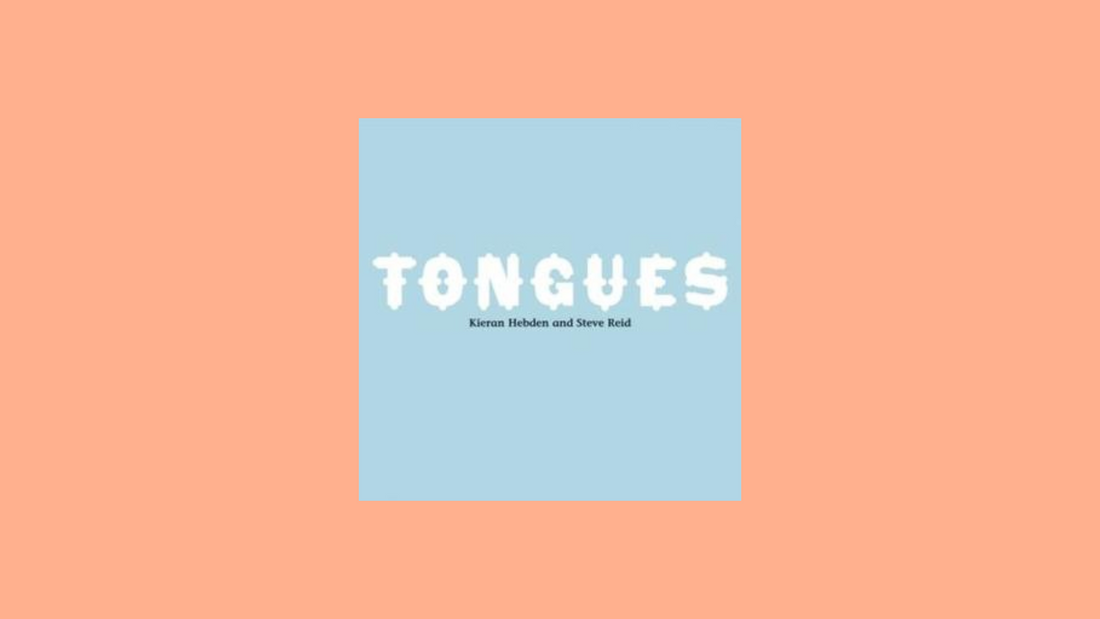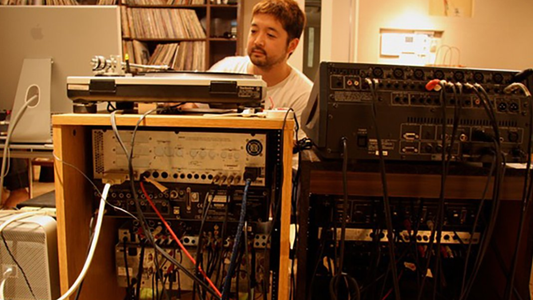
Kieran Hebden & Steve Reid – Tongues (2007)
By Rafi Mercer
It begins with a pulse: hand drums rolling forward, restless, alive. Then a piano fragment appears, circling, refracted through electronics. Gradually, the space fills — layers of rhythm, loops of melody, textures building and dissolving. This is Tongues, released in 2007, the third collaboration between producer Kieran Hebden (better known as Four Tet) and jazz drummer Steve Reid. It is a record that feels less like a studio album than a captured conversation: two musicians from different generations improvising together, finding common language in rhythm and texture.
The pairing itself was remarkable. Reid was a veteran drummer, born in the Bronx in 1944, who had played with John Coltrane, Miles Davis, Fela Kuti, James Brown, and Sun Ra. His drumming carried decades of history — jazz, funk, Afrobeat, soul — all distilled into a distinctive, propulsive style. Hebden, by contrast, was a figure of the electronic underground, known for blending folk samples, hip-hop beats, and glitchy textures under the Four Tet name. When they began collaborating in 2005, it seemed improbable. Yet what emerged was extraordinary: a fusion that was not fusion in the traditional sense, but dialogue — improvised, exploratory, alive.
Tongues captures their partnership at full stride. The title track opens with insistent drumming, Reid’s polyrhythms surging forward, while Hebden layers loops and fragments over the top. The effect is hypnotic: a trance built from acoustic power and electronic repetition. “Our Time” slows the pace, its groove looser, its textures more ambient, yet still anchored by Reid’s steady pulse.
“Guinea” nods explicitly to African influence, its drumming relentless, its electronics shimmering like heatwaves. “People Be Happy” is more playful, with Hebden chopping samples into percussive bursts, Reid responding with lightness and swing. “Rhythm Dance” lives up to its title — pure propulsion, driven by Reid’s drumming, with Hebden’s loops creating layers of polyrhythm.
What makes Tongues so compelling is its spontaneity. Nothing here feels scripted or polished. These are live takes, extended improvisations, captured in the moment. Hebden’s laptop is not used for perfection but for interaction: looping, refracting, responding in real time. Reid’s drumming is not accompaniment but equal voice: pushing, challenging, conversing. The result is music that feels both ancient and futuristic, both grounded in tradition and unmoored in possibility.
Culturally, the album sits at the crossroads of jazz revival and electronic experimentation. In the mid-2000s, electronic music was often associated with precision, sequencing, control. Hebden and Reid disrupted that, showing that laptops could improvise alongside drums, that machines could be as spontaneous as humans. At the same time, they reminded jazz audiences of the genre’s openness — its capacity to embrace new tools, new voices, new generations.
Listening today, Tongues feels like an invitation. It does not demand prior knowledge of jazz or electronic music. Its grooves are immediate, its energy contagious. Women and men, seasoned listeners or curious newcomers, can all step into its atmosphere. Its inclusivity lies in its informality: it is less a monument than a conversation, less a lecture than a jam. You are not asked to analyse but to join in, to move, to listen.
On vinyl, the record’s physicality is striking. Reid’s drums thud with presence, every snare crack resonating in the room. Hebden’s loops shimmer, their grain enhanced by analogue warmth. The improvisational nature of the music suits the surface crackle: imperfection becomes part of the dialogue, accident part of the texture. The cover art, abstract and colourful, mirrors the music’s sense of energy and interplay.
What endures about Tongues is its vitality. Reid passed away only three years later, in 2010, making these recordings even more precious. They capture a master drummer in dialogue with a younger artist, both learning from each other, both expanding what music could be. There is generosity in every groove, openness in every exchange. It shows that listening itself is collaboration, that music at its best is conversation across time, tradition, and technology.
To play Tongues now is to witness that conversation continuing. The drums roll forward. The loops shimmer. The groove persists. And you, as listener, become third participant: witness, companion, collaborator.
Rafi Mercer writes about the spaces where music matters. For more stories from Tracks & Tales, subscribe, or click here to read more.







